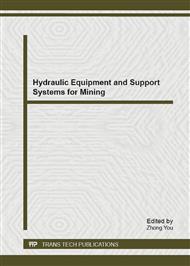p.3
p.9
p.14
p.18
p.22
p.26
p.30
p.34
Parametric Modeling of Transition Tube with Constant Section Area along Straight, Circular and Oblique Central Route on CATIA
Abstract:
Parametric modeling of transition tubes were implemented based on constant cross section area assumption along the main central routes on CATIA software. The key objective of modeling these similar structures is to provide more geometric configuration options and modifications of micro channels for multi phase flow systems. The modeling processes were parameterized and analyzed by CATIA “Generative Shape Design” module with the help of “Parameters” and “Relations” functions. The surface models are all designed in circular cross sections that are constrained in two ways: one is perpendicular to the main central routes of the tube for planar transitional junction, and another is, perpendicular to the sub-branch central routes for oblique transitional junction three dimensionally. Next work is emphasized on numerical simulation and experimental investigation with these geometric structures in a multi phase flow system.
Info:
Periodical:
Pages:
18-21
Citation:
Online since:
December 2012
Authors:
Price:
Сopyright:
© 2013 Trans Tech Publications Ltd. All Rights Reserved
Share:
Citation:


